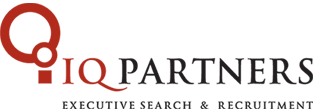Modern resumes need to do more than pass the eye test. They must also pass through applicant tracking systems and match the criteria employers have established for candidates they want to review and possibly interview. All recruitment agencies in Toronto will stress the importance of a strong and specific resume customized to each job you apply for.

A great resume will quickly communicate why you are a great candidate, the skills you possess, and how your experience and accomplishments make you a qualified candidate. Here’s what you need to do to write a resume for today’s job market.
1. Choose a format that matches the industry standard
There are three main resume formats to consider. Choose the one that best presents you and why you’re the best candidate:
- Chronological: Lists work experience in reverse chronological order; ideal for those with a strong work history.
- Functional: Focuses on skills rather than work history; best for career changers or those with gaps in employment.
- Combination: A mix of both, highlighting skills while also providing work history.
2. Write a Strong Summary Statement
Start with a summary that highlights your key skills, experiences, and career goals. This section should be tailored to the specific job you are applying for and explain why you are a great match for the role.
3. Highlight Key Skills
Include a section that lists relevant skills. Use keywords from the job description to ensure your resume aligns with applicant tracking systems (ATS). Use a bullet list or bold text to make your skills stand out.
4. Use Numbers to Showcase Your Work Experience and Impact
Employers want to see your work experience. But more importantly,. They want to see how you’ve positively impacted previous employers. Use numbers, case studies, facts, and figures to quantify your impact. For example, “managed a $100,000 advertising budget, getting a 20% ROI.”
5. Add Optional Sections as Needed to Show More About You
Depending on your background, consider adding additional sections. These sections could add more context for who you are professionally and personally. Examples include:
- Projects: Showcase major projects you’ve worked on.
- Volunteer Work: Highlight relevant volunteer experience.
- Awards & Honors: Display any industry recognition.
- Languages: Indicate language proficiency levels.
6. Use A Clean and Professional Format
Your resume should be easy to scan by ATS and by people. Avoid trying to stuff in as much text as possible. This will only cause clutter and make your resume difficult to read. Here are some formatting tips:
- Use a clean, professional format with clear headings and bullet points.
- Stick to one or two pages, depending on your experience level.
- Use a simple font like Arial, Calibri, or Times New Roman, and use size 10- 12pt.
7. Proofread
Sounds simple, but our recruiters see obvious errors on resumes all the time. Double-check for spelling and grammar errors. Review your resume critically to make sure it comes across well. Better yet, have a friend or mentor review your resume and offer feedback.
8. Optimize for ATS
Tailor your resume for each job by incorporating keywords from the job posting. Review the job ad and make sure your resume has the right keywords and phrases so it will get assessed favourably by ATS.
A Final Word On Writing A Strong Resume For Today’s Job Market
A well-structured resume tailored to the job you’re applying for can significantly increase your chances of getting noticed by employers. Stay concise, highlight your accomplishments, and always customize your resume for each opportunity. For more advice on getting hired, check out our Ultimate Job Interviews Guide.
More Resume Writing Advice From Our Recruiters
How to Explain a Gap in Your Resume
Stretching the Truth on Your Resume? There Could Be Legal Implications





